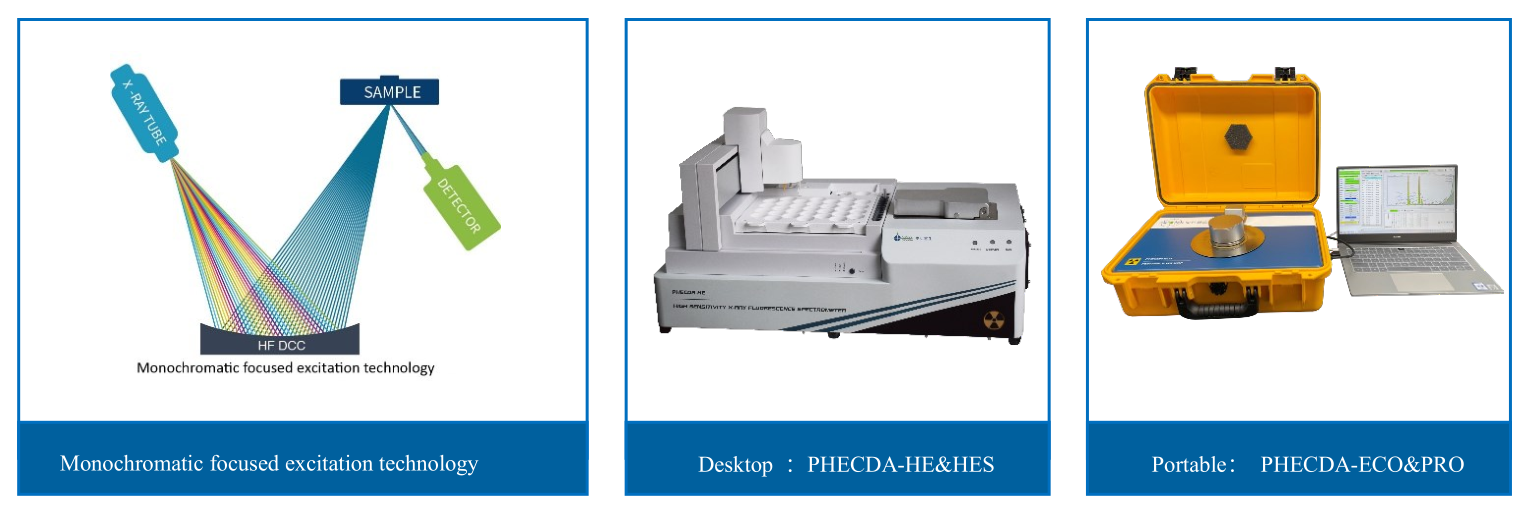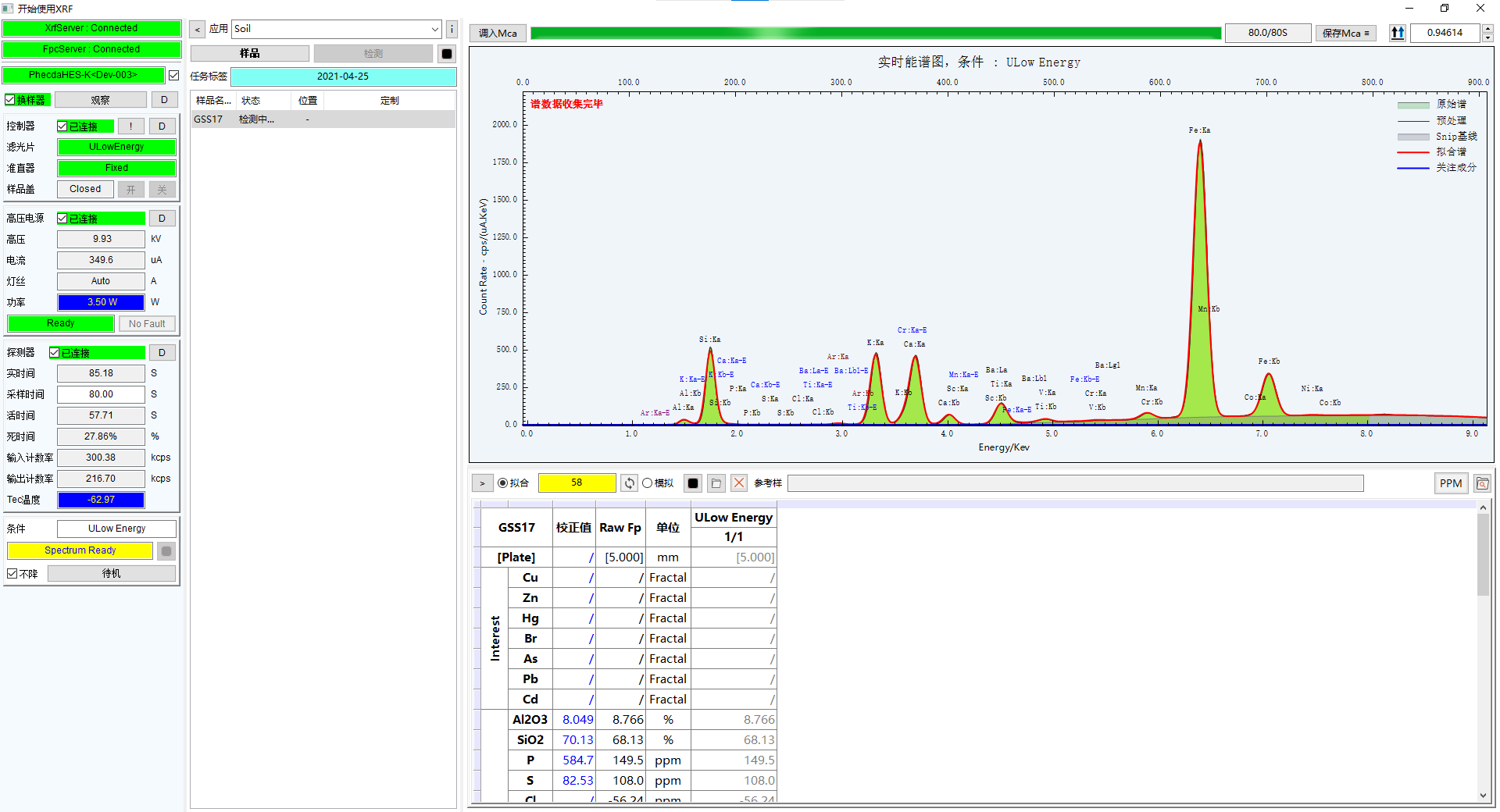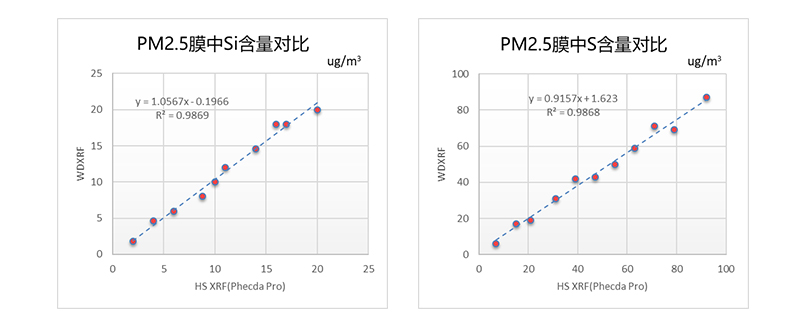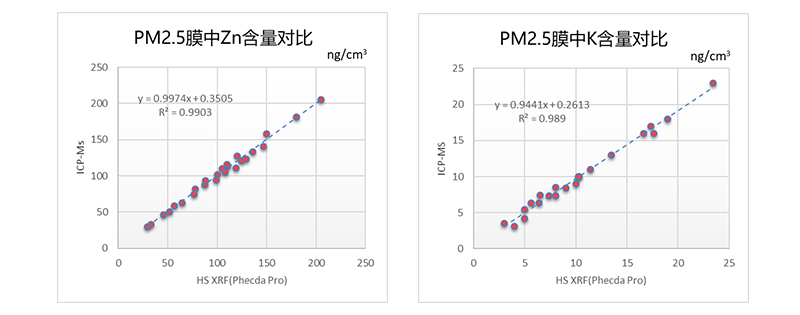
Overview
ICP MS, AA, XRF and other analytical instruments are commonly used to analyse the inorganic elemental content of air filtration membranes. Compared to wet digestion, the XRF method is simple, rapid and non-destructive in sample handling, and is capable of analysing non-metallic elements that are characteristic of pollution sources such as silicon, phosphorus, sulphur and chlorine. analysis of inorganic element content in air filtration membranes.
Conventional XRF requires a large number of standard samples to establish the standard curve, which is quite difficult for PM2.5 particulate matter with a wide variety of elements and a wide range of content, and standard samples are expensive and difficult to obtain.
The Fast FP method developed by Beijing Ancoren can be used to quantify inorganic elements in air filtration membranes without standard samples, and a small number of standard samples (or fixed value samples) can be used to correct for deviations and quality control the system to achieve accurate quantitative analysis of inorganic elements in air filtration membranes.
Methodological principles

(1)Monochromatic excitation
Fully focused hyperbolic bent crystal diffracts only the high intensity characteristic rays of the target in the X-ray tube emission spectrum, thus eliminating the interference of the scattered ray background in the incident spectrum and reducing the spectral background value by 2 orders of magnitude.
(2)Focused excitation
The monochromatic ray energy is focused onto a smaller surface of the sample, enhancing the excitation efficiency of the element to be measured, and the SDD detector can receive elemental rays produced at a larger stereo angle with increased signal intensity.
The high sensitivity X-ray fluorescence spectrometer relies on monochromatic focused excitation technology, which significantly reduces the detection limit of elements and makes it possible to analyse trace elements.
(3)Fast Fundamental Parameter Method (Fast FP2.0)
The Fundamental Parameter Method is a unique standard-free quantitative algorithm for X-ray fluorescence that mathematically models the explicit principles of X-ray fluorescence physics and establishes a library of relevant fundamental parameters to obtain the elemental content of a sample directly through a large number of calculations. The matrix effect, inter-element absorption enhancement, elemental spectral overlap and detector energy effects are fully accounted for, resulting in more accurate results and a wider range of sample adaptability.

Analytical spectra

Spectrum of inorganic elements in PM2.5 filter membrane
Performance data
(1)Detection limit
| Elemental intervals |
Na, Mg, Al, Si |
P, S, Cl |
K-Ni |
Cu-Sr: KαPb, Hg |
Cd, Ba, Sn, Sb |
| Detection limit (ug/cm²) |
0.05 |
0.02 |
0.005 |
0.003 |
0.003 |
Analytical conditions: Teflon filter membrane, detection limit 3 times the standard deviation of the results of 7 consecutive analyses on a blank filter membrane.
(2)Accuracy

Agreement between HS XRF and ICP-MS for Si and S in PM2.5.

Agreement between HS XRF and ICP-MS for Zn and K in PM2.5.
Features
 Standard-free quantification
Standard-free quantification
The Fast FP method for the quantification of elements in air-filtered samples with a small number of standards, reducing the dependence on standards and the high investment costs.
 High sensitivity
High sensitivity
High sensitivity X-ray fluorescence spectrometer (HS XRF® ) with monochromatic focused excitation, which significantly reduces the background interference of scattered rays in the X-ray tube emission spectrum and improves the sensitivity and accuracy of elemental analysis.
 Standards compliance
Standards compliance
The analytical method fully meets the requirements of HJ 829-2017 Determination of inorganic elements in ambient air Particulate matter Energy dispersive X-ray fluorescence spectrometry.
 Rapid analysis
Rapid analysis
Analysis time of 600 to 900 seconds for a single film.
 Spin device
Spin device
The configuration of the sample spin device can reduce the analysis error caused by the uneven distribution of the particles in the membrane again.
 Auto sampling device
Auto sampling device
The PHECDA-HES is equipped with a 30-position autosampler, which can automatically and continuously complete the analysis of 20 sample batches.
 On-site analysis
On-site analysis
The PHECDA-ECO weighs 7.5kg and is portable enough to analyse the inorganic elemental content of the collected air filter membrane in the field.
Application areas
environmental monitoring units, university research, third-party testing institutions, pollution emission enterprises, etc.







 Standard-free quantification
Standard-free quantification High sensitivity
High sensitivity Standards compliance
Standards compliance Rapid analysis
Rapid analysis Spin device
Spin device Auto sampling device
Auto sampling device On-site analysis
On-site analysis